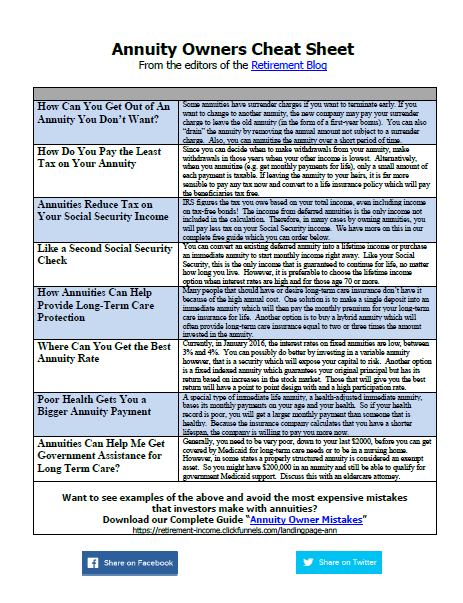US investors own over $1 trillion worth of annuities. And many of these individuals may not need their annuity to fulfill their retirement income requirements. However, they will often still want to make the most of these assets and pass as much as possible to heirs they care about. Additionally, owners of these annuities may desire to reduce the onerous annuity tax at ordinary income rates.
For instance, look at Jack and Sally, both 70 years old. Married for 45 years, they have two adult children, are in a high tax bracket and would like to minimize the annuity tax. The annuity which they bought fifteen years ago is doing well. But Jack and Sue have found that they live very comfortably without needing to use their variable annuity and are not sure how to handle it. Also, they have been thinking about the best way to benefit the local hospital and want to leave a meaningful present to the organization while not taking anything away from their children and grand children. They know that if they leave the actual variable annuity to their heirs, the annuity tax will be burdensome.
Here's agnereal rule when its anticipated an annuity will not be used by the owners: annuitize it and use the payments, after annutiy tax, to purchase life insurance for the heirs. The benefits are several:
- the parents can take advantage of the beneficial way that annuity tax is assessed
- the heirs will receive a completely tax free benefit form the life insurance policy
- the life insurance policy has leverage--for each $1 the parents invest, the heirs may receive $3
Jack and Helen might annuitize the annuity contract and invest the tax-favored payments into two, second-to-die variable life insurance policies. Note that the payments to Jack and Helen would be in partially tax exempt from annuity tax.
An irrevocable trust in would own the first life insurance policy. The second policy would be provided directly to the hospital's foundation and offer Jack and Helen with an on-going income tax deduction for their annual premium obligations. It is likely that the tax deduction would offset the annuity tax due from Jack and Helen.
When Jack and Helen pass, the first policy's death benefit will pass free of income and estate taxes in to Jack and Helen's children and grandchildren. And since a charity is the owner and irrevocable beneficiary of the second policy, the tax-free proceeds will not be included in the survivor's estate. Depending on Jack and Helen's ages, this design will give far more to the children even though money is left to charity.
There are several ways to be tax creative along with annuity tax and annuity tax planning. Consult with a tax professional and offer this article to get their creative ideas flowing.

Leave a Reply